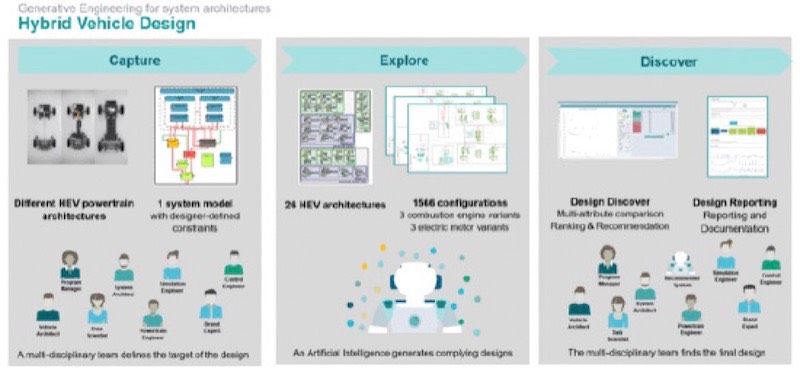During last week’s Realize LIVE User2User virtual event, Siemens Digital Industries Software announced the release of Simcenter™ Studio, a web application that allows engineers and data scientists to create workflows in computational notebooks that enable generative engineering of complex systems. Simcenter Studio fosters innovation in designing new products by finding the best possible system architectures out of hundreds or thousands of possibilities using Simcenter’s physics-based system simulation and design space exploration capabilities augmented by artificial intelligence. Optimal conceptual design results are automatically generated to meet the user’s design requirements and specific system architecture constraints in a unique way to help engineers analyze, understand, and address cross-domain complexity more rapidly and reliably than ever before. This AI-based generation of system architectures is the latest addition to Simcenter software within Siemens‘ Xcelerator™ portfolio.
Augmenting Human Intelligence to achieve Generative Engineering
So what’s really new about Simcenter Studio? It’s the merger of traditional documents and text-based information with embedded executable system simulations guided by artificial intelligence into a computational notebook—replacing the physical folders and workbooks that many engineers still use with a new digitally-enabled way of doing systems level design. Simcenter Studio creates a digital engineering notebook that is live, revisionable, traceable, archivable, and sharable in a digital format to enable both innovation and collaboration. Simcenter Studio helps bring physics-based systems simulation into the heart of the systems engineering trade studies process via a deep integration of Simcenter Amesim inside the computational notebook user interface. It accomplishes this goal by direct spawning of system simulation models from inside the notebook interface along with automated gathering and querying of the simulation results. A component-based domain specific language to capture design specifications combined with a new state-of-the-art AI-based generation algorithm assists engineers in generating and analyzing a large number of topologically different system architectures as well as variants of those system architectures in a much more rapid and accurate manner than can be accomplished with Excel spreadsheets and other custom codes often used in trade studies.

Figure 1—Simcenter Studio Hybrid Vehicle Design Application Example
(Courtesy of Siemens Digital Industries Software)
Bottom line: CIMdata believes that this new capability has the potential to significantly impact more widespread adoption of physics-based systems simulation earlier and more effectively in the conceptual design and systems engineering process, thus enabling generative engineering, and saving countless hours and dollars invested in suboptimal designs.







